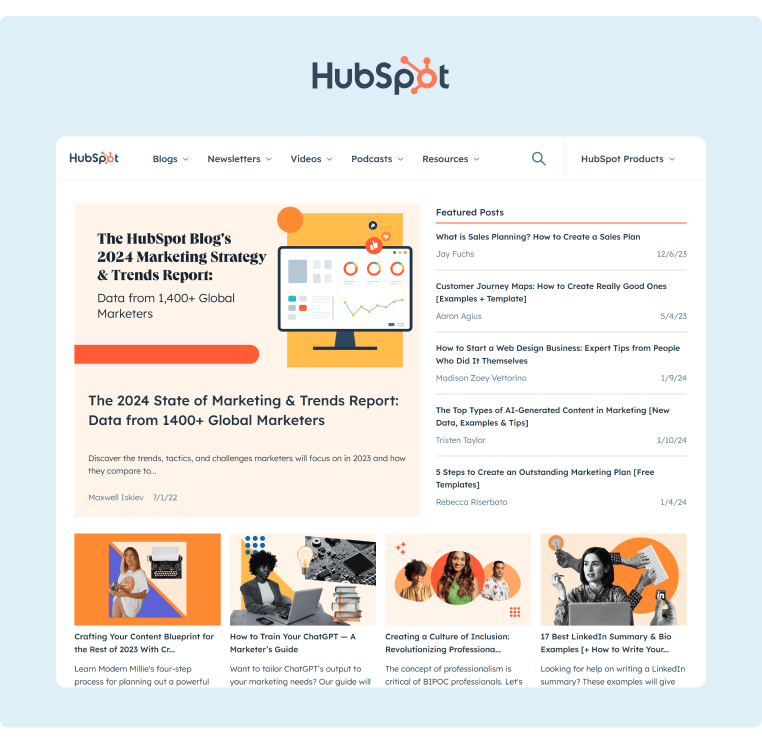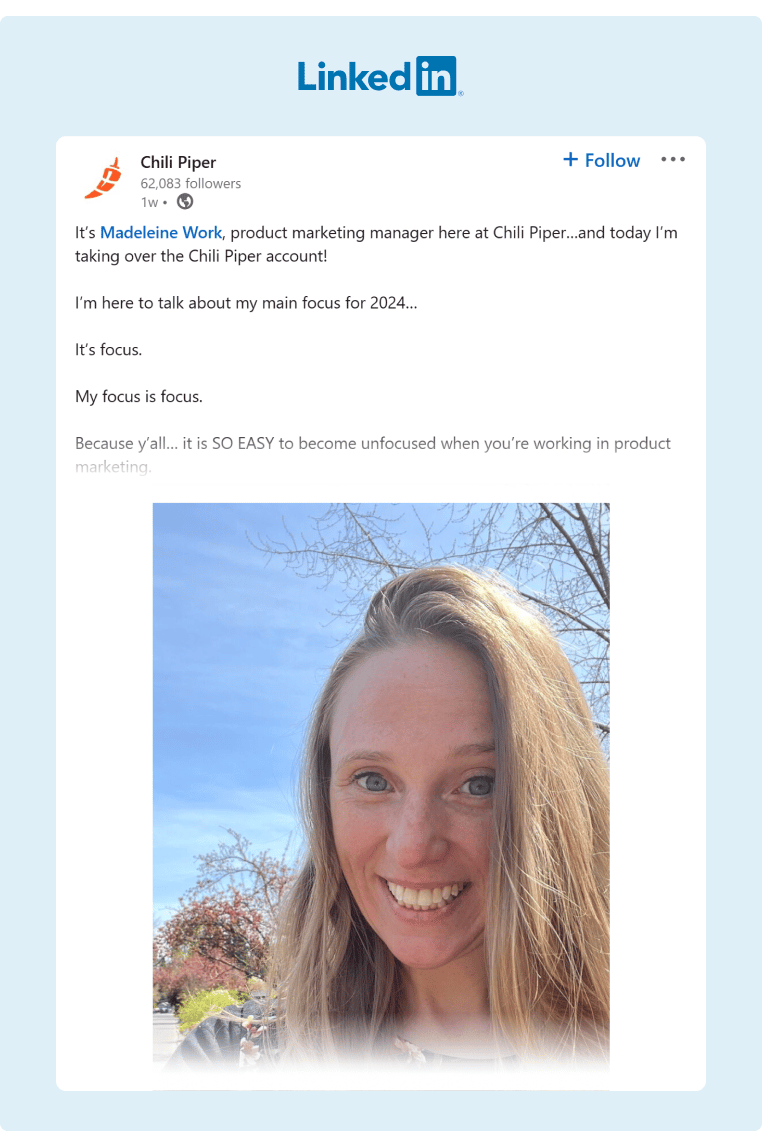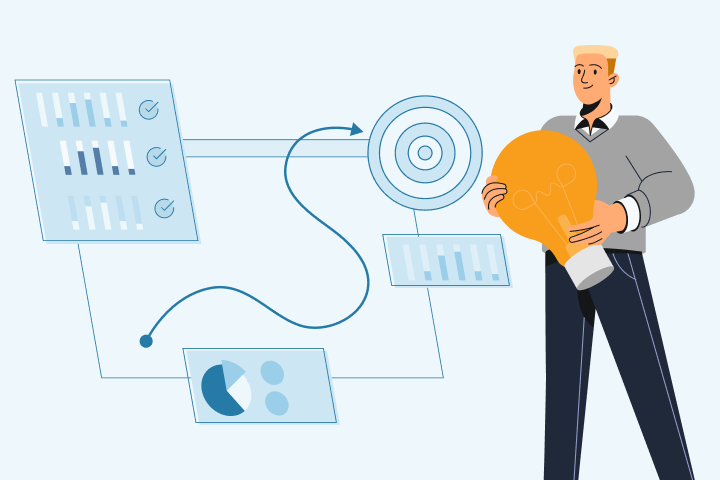How To Build a Marketing Strategy for Brand Awareness
It’s no secret that businesses armed with a strong brand awareness marketing strategy outperform their competitors, capturing a larger share of their niche markets. These brands are household names (e.g., Apple, Coca-Cola, Amazon) and immediately top-of-mind when a customer needs a product or service.
But, how did these brands rise to the top? They used a marketing strategy for brand awareness. A marketing strategy for brand awareness has many benefits including brand recall, increased customer loyalty and retention, and brand equity.
Effective marketing strategies employ a variety of tactics for brand awareness. These marketing tactics include content marketing, engaging social media campaigns, and employee advocacy, just to name a few.
In this article, we’ll share the components of a successful marketing strategy for brand awareness, including how to create a brand awareness strategy for B2B. We’ll also make some predictions regarding the future of brand awareness.
Ready to start building the best marketing strategy for brand awareness? Let’s take a look at some examples of successful brand awareness strategies.
Examples of Successful Brand Awareness Strategies
There are a variety of methods you can use to create awareness for your brand. The following are some examples of successful brand awareness strategies. Feel free to use one or all of these strategies.
1. Regularly Publish Content on Your Company Blog
An effective and affordable brand awareness tactic is offering free and helpful content to your target audience. Regularly publishing content on your brand’s blog is a great way to answer potential questions or offer insight into relevant industry topics. In fact, having a blog increases your chances of ranking higher in search by 434%!
HubSpot is an excellent example of a brand using its blog to increase brand awareness and bolster their reputation as an industry thought leader.

Source: HubSpot
2. Guest Post for Other Companies
Another marketing strategy for brand awareness example is guest blogging for relevant businesses to further increase your brand visibility. Before you jump into guest blogging, it’s helpful to choose SMART goals. These goals are specific, measurable, attainable, relevant, and timebound. Here, you’ll determine if you’re aiming to improve your SEO performance, boost the number of high-quality backlinks, or generate leads from referral traffic.
Once you’ve selected your SMART goals, the next step is doing some research to select relevant guest blogging sites. You want to choose sites that accept guest bloggers and also have a high domain authority (40 or higher) and low spam score (3% or lower).
Finally, create content that provides value (e.g., how-to guides, thought leadership) for your target audience. Don’t forget to provide a concise author bio, as well.

Source: GaggleAMP
3. Collaborate With Relevant Brands and Influencers
Partnering with like-minded brands and relevant influencers will help you leverage their social followers to spread brand awareness. You’ll also have an advantage by working with an established brand and/or influencer that customers already trust.
This can also extend into brand awareness campaigns with co-branding partnerships with complementary brands like Apple Pay and Mastercard, for example. Mastercard was the first credit card company to allow its users to store their credit and debit cards on Apple Pay. The partnership brought a large audience to Apple and Mastercard.

Source: Apple
4. Implement an Employee Advocacy Program
The best marketing strategy for brand awareness examples have one major thing in common: employee advocacy.
To maximize your marketing efforts, implement an employee advocacy program. Asking your employees to engage and share branded content with their networks will expand your brand’s reach and build audience trust.
One of our favorite brands with an employee advocacy program is Kiteworks, a company that manages and governs sensitive communications and content to protect companies and customers from cybersecurity threats. By using GaggleAMP for its employee advocacy program, Kiteworks increases its brand awareness through social media platforms like LinkedIn.

Now that we’ve reviewed some solid examples, let’s dive into creating a brand awareness strategy for B2B.
Creating a Brand Awareness Strategy for B2B
Brand awareness doesn’t happen overnight. It requires strategic planning and execution. It also isn’t immune to modifications as needed. So, whether you need a marketing strategy for a new business or need to know how to increase brand awareness for B2B for an existing business, follow these six steps to craft an effective B2B strategy:
1. Give Your Brand a Voice
Depending on the personality of your target audience, determine if your brand’s tone is serious, humorous, casual, etc. In addition to signature brand colors and designs, a brand’s voice can also create a distinct brand identity in your customers’ minds. For example, Wendy’s snarky brand of humor is instantly recognizable on social media, particularly on the platform X.

Source: Wendy’s
Having a brand voice is also a helpful marketing strategy for startup companies who need to establish their brand’s personality.
2. Establish Measurable Goals
To optimize your brand awareness strategy, first, select key brand awareness metrics, then set goals for each metric and track them. Typical goals include brand impressions, brand name search volume, audience growth, brand sentiment, and website traffic.
3. Create a Top-of-the-Funnel Marketing Strategy
To move your prospects closer to the point-of-sale, you need to map out a top-of-the-funnel (TOFU) marketing strategy. Creating content that introduces them to your brand (and provides value), will help build a relationship and trust with your ideal audience.
Content you can use at the TOFU stage are blog posts, video content, social media content, checklists, and infographics.
4. Map Out a MOFU/BOFU Marketing Strategy
Once your prospects are in the TOFU, it’s time to move them further into the funnel with middle-of-the-funnel (MOFU) and bottom-of-the-funnel (BOFU) strategies. Content at these stages include webinars, ABM campaigns, white papers and case studies, e-books, and presentation slides.
5. Create a Publishing Workflow
Consistency with publishing and messaging is key for brand awareness. If you’re not posting often enough, your audience will forget you. And, if your messaging is always different, your audience might not recognize your brand.
Using a project management tool like Asana, Monday.com, or Trello can provide a place for you to upload your branding and messaging guidelines as well as follow a publishing calendar with deadlines.

Source: Monday.com
6. Measure Results and Modify
Once you’ve collected enough data to give you a big picture of those key performance metrics that you’ve been tracking, it’s time to measure your results. You want to give it a few months to see what direction your metrics are growing in. Ideally, you’ll see positive growth in brand impressions, brand name search volume, audience, brand sentiment, and website traffic.
You’ll also want to see that your sales and revenue growth data is increasing. If you don’t, that means there’s a disconnect between web traffic and sales, which will need further analysis.
Brand Awareness Strategies in Digital Marketing
Brand awareness strategies in digital marketing are crucial for amplifying your brand’s reach and achieving greater visibility with potential customers. This can be achieved through the strategic use of social media channels, content marketing, and search engine optimization (SEO).
Let’s take a look at these three strategies:
1. Social Media Marketing
Through the strategic use of social media channels, businesses can effectively enhance their brand awareness and foster meaningful connections with their consumers. Social media offers an avenue for brands to build a dynamic online presence. Platforms like LinkedIn are particularly effective marketing tools for B2B businesses aiming to reach a more professional, targeted audience.
A marketing strategy for LinkedIn can include sharing relevant industry articles, engaging with followers’ posts, and promoting webinars or other events. LinkedIn's algorithm tends to favor posts that generate interactions, so creating posts that evoke comments or shares can increase a brand's reach.

2. Content Marketing
Content marketing is a digital marketing strategy for brand awareness that centers on the creation and distribution of consistent, relevant, and valuable content to a defined audience. This method can include blog posts, e-books, whitepapers, infographics, etc. The goal is to provide value to the audience, positioning your brand as a reliable source of information in your industry.
3. Search Engine Optimization (SEO)
Search engine optimization (SEO) is another essential brand awareness strategy in digital marketing. This organic strategy involves optimizing your online content based on what your potential customers are searching for to increase your visibility in search engine results pages. The higher the ranking, the greater the brand recall.
Online ads, such as pay-per-click (PPC) or social media ads, offer businesses a cost-effective method of reaching a wider audience. Leveraging targeted ads can result in improved brand recognition, as your ads will be shown to audiences who are most likely interested in your product or service.
Future of Brand Awareness
Tactics for driving brand awareness are always evolving. Here are four strategies that will impact the future of brand awareness.
1. Having a Strong Brand Identity
In 2024, brand identity will be more important than ever. It will be the driving factor in attracting new customers and top talent, and retaining current customers and employees. Your brand awareness strategy needs to include developing a brand voice that your audience enjoys and recognizes.
2. Embracing Artificial Intelligence (AI)
As artificial intelligence (AI) continues to dominate, knowing how to embrace it and navigate it will be crucial. Getting your employees engaged with AI is the first step. Empower employees to test AI tools and to use AI to streamline daily tasks to free up your team for cross-training or new projects.

Source: GaggleAMP’s AI-Powered Paraphrase
3. Offering Personalized Customer Experiences
Personalization is the new standard in customer experience. Personalization at scale offers customized experiences, products, and services. Having a personalized marketing strategy for services will grow customer satisfaction and loyalty, which in turn, will grow your brand via word-of-mouth referrals.
4. Implementing an Employee Advocacy Program
More brands are turning to an employee advocacy solution. If you don’t already have one, it’s never too late to start. Employee advocacy is a powerful tactic to generate more brand reach. Additional benefits include building brand reputation and credibility, attracting new talent, getting better quality leads, boosting ROI, and improving employee engagement.
Imagine you’re developing a marketing strategy for a software product launch. Simply by leveraging your employees’ social networks, you’ll get more eyes on your new product. That’s the power of an employee advocacy campaign for brand awareness.

Ready To Boost Your Brand Awareness?
You put the work into building a strong marketing strategy for brand awareness. Now an employee advocacy platform like GaggleAMP can help you take it to the next level. Schedule a demo today to see why more than 100,000 people trust GaggleAMP with their employee advocacy.











